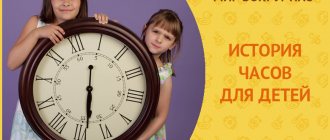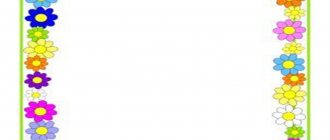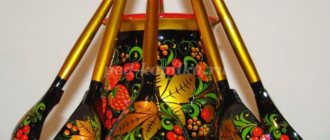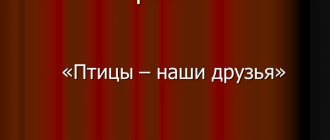Men's corner
He was at the hearth. There was always a wide bench, which was fenced on both sides with wooden boards. They were carved in the shape of a horse's head, which is why the male corner is often called “konik”. Under the bench, men stored their tools intended for repairs and other men's work. In this corner, men repaired shoes and utensils, and also wove baskets and other products from wicker. Various tools, saws, planes were stored here. The owner wove bast shoes, sewed shoes, and fitted lasts.
All the guests who came to the owners of the house for a short time sat down on the bench in the men's corner. It was here that the man slept and rested. On the other side of the stove was the male space , the "male kingdom of the house."
There was a threshold men's shop here, where men did housework and rested after a hard day. Underneath there was often a cabinet with tools for men's work. It was considered indecent for a woman to sit on a threshold bench. They rested during the day on a side bench at the back of the hut.
Table in the hut
Seats at the table in the red corner were strictly assigned by tradition, not only during holidays, but also during regular meals.
The meal united the clan and family. The place in the red corner, in the center of the table, under the icons, was the most honorable. Here sat the owner, the most respected guests, and the priest. If a guest went and sat in the red corner without the owner’s invitation, this was considered a gross violation of etiquette.
The next most important side of the table is the right side of the owner and the places closest to him on the right and left. This is a "men's shop". Here the men of the family were seated according to seniority along the right wall of the house towards its exit. The older the man, the closer he sits to the owner of the house.
And at the “lower” end of the table, on the “women’s bench” running along the front of the house, women and children sat.
The mistress of the house was seated opposite her husband from the side of the stove on an extension bench. This made it more convenient to serve food and host dinners.
During the wedding, the newlyweds also sat under the icons in the red corner.
for guests . It is located by the window. It is still a custom in some areas to seat guests by the window.
This arrangement of family members at the table shows the model of social relations within the Russian family.
The table - it was given great importance in the red corner of the house and in the hut in general. The table in the hut was in a permanent place. If the house was sold, then it was necessarily sold along with the table!
It was not allowed to place foreign objects on the dining table, because this is the place of God himself. It was forbidden to knock on the table: “Don’t hit the table, the table is God’s palm!” . There should always be bread on the table - a symbol of wealth and well-being in the house. They said this: “Bread on the table, so is the table the throne!” . Bread is a symbol of prosperity, abundance, and material well-being. That's why it always had to be on the table - God's palm.
The table must be installed along the floorboards, i.e. the narrow side of the table was directed towards the western wall of the hut. This is very important because... the direction “longitudinal - transverse” was given a special meaning in Russian culture. The longitudinal one had a “positive” charge, and the transverse one had a “negative” charge. Therefore, they tried to lay all the objects in the house in the longitudinal direction. This is also why they sat along the floorboards during rituals (matchmaking, as an example) - so that everything would go well.
The tablecloth on the table in the Russian tradition also had a very deep meaning and forms a single whole with the table. The expression “table and tablecloth” symbolized hospitality and hospitality. Sometimes the tablecloth was called “bread-salter” or “self-assembled”.
Wedding tablecloths were kept as a special heirloom. The table was not always covered with a tablecloth, but only on special occasions. For a wedding feast, they took a special tablecloth and laid it inside out (from damage). A tablecloth could be spread on the ground during a funeral service, because a tablecloth is a “road”, a connection between the cosmic world and the human world; it is not for nothing that the expression “a tablecloth is a road” .
The family gathered at the dinner table, crossed themselves before eating and said a prayer. They ate sedately, and it was forbidden to get up while eating. The head of the family - a man - began the meal. He cut food into pieces, cut bread. The woman served everyone at the table and served food. The meal was long, leisurely, long.
Utensil
Cooking utensils These are cauldrons, cast iron pots for porridges, soups, clay patches for baking fish, cast iron frying pans. Beautiful porcelain dishes were stored so that everyone could see them. She was a symbol of wealth in the family. Festive dishes were stored in the upper room, and plates were displayed in the cupboard. Everyday dishes were kept in wall cabinets. Dinnerware consisted of a large bowl made of clay or wood, wooden spoons, birch bark or copper salt shakers, and cups of kvass.
To store bread in a Russian hut, painted boxes were used, brightly colored, sunny, joyful. The painting of the box distinguished it from other things as a significant, important thing.
They drank tea from a samovar.
There was almost no furniture Furniture appeared much later, not so long ago. No wardrobes or chests of drawers. Clothes and shoes and other things were not stored in the hut.
The most valuable things in a peasant house - ceremonial utensils, festive clothes, dowries for daughters, money - were kept in chests . Chests always had locks. The design of the chest could tell about the prosperity of its owner.
Conclusion
"My home is my castle". Home is also homeland, family, relatives. In a person’s life, home is of great importance because all the main family rituals are associated with it: homeland, wedding, funeral. A person’s life begins with a house, he becomes familiar with the house, life at home and ends when he says goodbye to his native home forever.
In a Russian hut you can always feel the warmth of hands, a person’s love for his home. Compliance with customs, rituals, signs during the construction of a house, in the interior decoration of a house is the inner world of a person, his worldview on life, which is passed on to us from generation to generation.
We try to preserve and observe the rituals of our ancestors, which go back many centuries, which is why it is believed that the peasant hut is a symbol of Russian culture.
Red corner
Red corner in the hut between the windows, There is an icon and a candle next to it.
The Red Corner is the central main place in a hut , in a Russian house. It is also called “saint”, “God’s”, “front”, “senior”, “big”. It is illuminated by the sun better than all other corners in the house, everything in the house is oriented towards it.
It contained a home iconostasis. It was considered important that when entering a hut, a person should first of all pay attention to the icon. In connection with this, there was even a saying : “Without God, you cannot reach the threshold.”
Here there were not only images, but also the Bible, prayer books, candles, branches of consecrated willow were brought here on Palm Sunday or birch branches on Trinity, and veres (juniper) on Maundy Thursday.
The icons were installed on a special shelf and had to be in a certain order. The most important icons that should have been in every home were considered to be the icons of the Mother of God and the Savior. The red corner was always kept clean, and sometimes decorated with embroidered towels.
The red corner was especially worshiped. Here, during the wake, they placed an extra device for another soul who had passed into the world.
It was in the Red Corner that the chipped birds of happiness, traditional for the Russian North, were hung.
On holidays, the red corner was decorated with woven and embroidered towels, flowers, and tree branches. Their colorful patterns enlivened its log walls, adding festivity and making the home elegant. They surrounded the shrine in the red corner with a towel and hung it on windows, mirrors, and walls.
The “Red Corner” was also called the Holy Corner. This is the most honorable place in the house. A cradle for a baby hung right there. For babies, hanging cradles were arranged, decorated with carvings and bright paintings.
There must be icons in the house. In sufficient quantity, but within reasonable limits. Currently, the place of the icon in the house is taken by the television. But even in the modern world, this tradition has been preserved in many homes: keeping icons at home. My grandmother has an icon of the Mother of God “Quick to Hear.” It depicts the Virgin Mary with a baby in her left hand. How did this icon appear?
Long ago, the monk Neil lived in a monastery on Mount Athos. Every day, entering the refectory, he inadvertently smoked the image of the Mother of God, which is located near the entrance, with his torch. One day, passing by the face, he heard a voice that ordered him not to burn the icon anymore. Neil didn't pay any attention to this and continued to repeat his usual actions. After some time, the voice again turned to the monk and said that he was behaving unworthily and therefore he was being deprived of his sight. Neil was very scared and began to repent.
Every day he cried and asked the Mother of God for forgiveness, wanting to regain his sight. After some time, the prayer was heard, and the voice again addressed the monk. He said that Neil begged for forgiveness and his sight would be restored. Another voice ordered from now on to call the icon “Quick to Hear”, since it will soon fulfill all the requests of people.
This happened in 1664 on November 9th.
The goddess in the red corner is like the altar of an Orthodox church and was interpreted as the presence of God in the house. The table in the red corner is the church altar. In the red corner they prayed to the icon.
All meals and main events in the life of the family took place at the table: birth, wedding, funeral, farewell to the army.
Stove corner
The stove in the house is the mother. Without her, you might as well die.
About a fourth, and sometimes a third, of the hut was occupied by a Russian stove. They said about her: “The stove is the head of everything.” The head is the most important thing. She was a symbol of home. They not only prepared food in it, but also prepared feed for livestock, baked pies and bread, washed, heated the room, slept on it and dried clothes, shoes or food, and dried mushrooms and berries in it.
And they could keep chickens in the oven even in winter. Although the stove is very large, it does not “eat up”, but, on the contrary, expands the living space of the hut, turning it into a multi-dimensional, multi-height space. The stove corner was considered a dirty place and was separated from the rest of the hut by a curtain.
No wonder there is a saying “dance from the stove” , because everything in a Russian hut begins with the stove. Remember the epic about Ilya Muromets? The epic tells us that Ilya Muromets “lay on the stove for 30 and 3 years,” that is, he could not walk. Not on the floors or on the benches, but on the stove!
The whole family slept on the stove, and under the ceiling between the stove and the wall of the hut there were plank bunks used for sleeping or storing things.
“The oven is like our own mother ,” people used to say. Many folk healing practices and signs were associated with the stove. For example, you cannot spit in the oven. And it was impossible to swear when the fire was burning in the stove.







